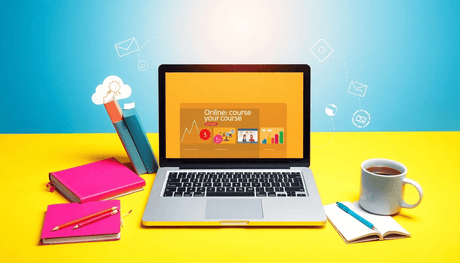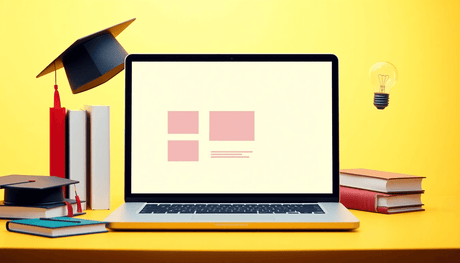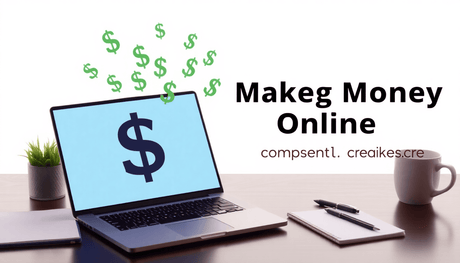Introduction
E-learning content formats and licensing models shape how educational materials are created, delivered, and used. Understanding what is the difference between LTI, SCORM and PLR downloads is essential for educators, entrepreneurs, and content creators aiming to maximize value from digital learning resources.
- LTI, SCORM, PLR downloads represent distinct approaches within e-learning standards.
- Each influences content ownership, integration capabilities, and user experience differently.
- Choosing between them impacts how you build courses, track learner progress, or customize materials.
This article breaks down these three key terms:
- Understanding LTI as an interoperability standard.
- Exploring SCORM for packaging and tracking e-learning modules.
- Demystifying PLR as a licensing model granting ownership and customization rights.
You will gain clarity on technical versus licensing distinctions and discover practical implications for leveraging each method effectively.
Understanding LTI (Learning Tools Interoperability)
The LTI standard was developed by the IMS Global Learning Consortium to address a critical need in e-learning: seamless integration of external tools into Learning Management Systems (LMS). LTI acts as a bridge, enabling different educational platforms and software to communicate and work together without complicated setups or compatibility issues.
What is LTI?
LTI is a specification that allows third-party tools—such as interactive simulations, assessment engines, or content repositories—to connect securely with LMS platforms. It was created by IMS Global Learning Consortium, an organization focused on promoting open interoperability standards in education technology.
How LTI Works
LTI enables secure communication between the LMS and external tools by sharing user information, course context, and launch data. This communication happens behind the scenes through standardized protocols that ensure data privacy and integrity.
Key aspects include:
- Authentication: Verifies users without requiring multiple logins.
- Data exchange: Transfers necessary context like user role, course ID, and assignment details.
- Security: Protects sensitive information using OAuth signatures and encrypted messaging.
Typical Use Cases
Educators and content providers leverage LTI for:
- Embedding interactive content such as virtual labs or simulations directly into courses.
- Linking assessment tools that provide detailed analytics without hosting quizzes inside the LMS.
- Integrating third-party resources like video libraries or adaptive learning platforms seamlessly.
These use cases highlight how LTI removes the burden of hosting and maintaining diverse tools within a single LMS environment.
Benefits of LTI for Educators and Content Providers
- Interoperability: Tools built with LTI can work across multiple LMS platforms (Canvas, Moodle, Blackboard), reducing vendor lock-in.
- Flexibility: Easily add or swap external tools based on instructional needs without heavy IT support.
- Consistency: Maintain a unified learner experience while tapping into specialized functionalities from various providers.
Understanding what is the difference between LTI and other e-learning standards begins with recognizing that LTI focuses primarily on tool integration and interoperability rather than content packaging or licensing. This foundational role makes it invaluable for modern education ecosystems aiming to combine best-in-class solutions efficiently.
Understanding SCORM (Sharable Content Object Reference Model)
SCORM standards are a widely used technical framework created specifically for e-learning software products. They were developed to improve compatibility and interoperability between course content and Learning Management Systems (LMS). With SCORM, you can package learning materials into a single, standardized unit.
How SCORM Packages Work
Here's how the process works:
- Course creators assemble content—such as videos, quizzes, and documents—into a SCORM-compliant package.
- This package is uploaded directly into an LMS that supports SCORM standards.
- Once imported, the LMS can launch the course and track learner interactions in real time.
Key Features Supported by SCORM
SCORM offers several important features:
- Progress Tracking: Monitors how far learners have advanced through the course.
- Completion Status: Records whether learners have finished specific modules or the entire course.
- Quiz Scoring: Captures assessment results and can trigger follow-up actions based on scores.
These features enable detailed learner analytics that help educators measure engagement and effectiveness of their content.
Reusability and Sequencing
One of the advantages of SCORM is its ability to promote reuse of learning objects. Content packaged once can be imported across any SCORM-compliant LMS without modification. Additionally, SCORM defines rules for sequencing — determining the order in which learners access modules — allowing courses to adapt dynamically based on learner progress or choices. This flexibility supports personalized learning paths within structured courseware.
Typical Applications
You will often find SCORM used in:
- Corporate training programs requiring consistent delivery and tracking across global teams.
- Educational institutions delivering multimedia-rich lessons combined with interactive quizzes.
- Certification courses where proof of completion and scoring is mandatory.
The e-learning packaging model set by SCORM simplifies deployment while ensuring reliable LMS tracking, making it ideal for structured courses that demand detailed progress monitoring and interoperability across platforms.
Understanding PLR (Private Label Rights) Downloads in E-Learning
PLR licensing is a unique concept in the world of e-learning, offering a different approach compared to technical standards like LTI and SCORM. Here are some key points to help you understand PLR downloads:
1. What is PLR?
PLR stands for Private Label Rights. It's more about licensing than a specific technical format. With PLR, individuals can purchase rights to educational materials and customize them as per their needs.
2. What types of materials can you download with PLR?
Under PLR, you can access various types of educational content such as video courses, ebooks, modules, and even PLR printables. For instance, you can find a PLR Video Course on creating an effective marketing plan, or explore the Ethical Hacking PLR Bundle which includes 22 ethical hacking courses that you can sell on your own website. This diversity enables users to choose content formats that align with their teaching or training requirements.
3. What rights do PLR licenses grant?
When acquiring PLR content, users gain the rights to modify the material, brand it as their own product, and even redistribute or resell it. This flexibility empowers entrepreneurs and educators to tailor content to suit their audience.
4. What are the advantages of using PLR?
Entrepreneurs and educators benefit from PLR downloads by gaining access to ready-made customizable course content. This convenience saves time and resources while still allowing for personalized touches. For example, a course on stepping out of your comfort zone could be easily customized for a specific audience.
5. How does PLR differ from LTI and SCORM?
Unlike LTI and SCORM that focus on integration and packaging standards, PLR revolves around ownership rights. Users have more control over how they utilize and distribute the educational content they acquire under a PLR license.
By understanding the nuances of PLR licensing in e-learning, educators, entrepreneurs, and content creators can make informed decisions on leveraging pre-existing materials for their educational endeavors. Whether it's adopting new strategies from a Metaverse Master Class or learning how to convert website visits into email subscribers using tools like Hellobar in MailChimp through specialized courses, the possibilities with PLR are vast and varied.
Key Differences Between LTI, SCORM, and PLR Downloads
1. Purpose Comparison
- LTI: Focuses on interoperability and integration to connect external tools with Learning Management Systems.
- SCORM: Primarily a packaging standard enabling the delivery and tracking of structured courseware within LMSs.
- PLR: A licensing model that grants ownership rights over downloadable educational content.
2. Technical vs. Legal/Licensing Distinctions
- LTI: Centers on technical standards for seamless tool integration into LMS platforms.
- SCORM: Technical standard for packaging and tracking structured learning materials.
- PLR: Emphasizes legal and licensing aspects, granting rights to modify, brand, redistribute, or resell content.
3. Impact on Content Usage
- LTI: Enhances interoperability, allowing users to integrate third-party tools without hosting complexity.
- SCORM: Enables comprehensive tracking of learner progress and completion status across various SCORM-compliant LMSs.
- PLR: Offers ownership rights over content, facilitating customization, branding, and resale by entrepreneurs and educators.
Practical Implications for Entrepreneurs, Educators & Content Creators
Understanding the distinctions between LTI, SCORM, and PLR informs your e-learning business models and course customization strategies. Each format supports different goals in course creation, distribution, and learner engagement.
1. Leveraging PLR for Branding and Reselling
Entrepreneurs benefit from PLR downloads by gaining full ownership rights to ready-made courses. Platforms like Uthena offer white-label video courses that can be customized, rebranded, and resold as unique products. This approach simplifies content development while enabling flexible reselling strategies tailored to niche markets or specific audiences.
2. Integrating Interactive Tools with LTI
LTI excels when you want to embed advanced third-party applications—such as real-time quizzes, virtual labs, or discussion forums—directly into your LMS without managing hosting complexities. This enhances learner engagement through seamless interoperability while maintaining data security and user privacy.
3. Deploying SCORM for Detailed Tracking
SCORM packages provide structured courseware with built-in progress tracking, quiz scoring, and completion reporting. Ideal for environments requiring compliance monitoring or detailed analytics, SCORM ensures consistent delivery across different LMS platforms with standardized sequencing and navigation.
Choosing the right approach depends heavily on your priorities:
If you seek ownership control and easy content customization, PLR is a practical choice. For seamless integration of sophisticated tools without additional hosting burdens, LTI fits best. When detailed learner tracking and standardized course delivery matter most, SCORM remains the go-to solution.
Aligning these options with your strategic objectives shapes effective e-learning offerings that resonate with learners and scale your educational business.
Conclusion
Choosing the right e-learning format is essential for your educational or business needs. Take the time to assess what works best for you.
Before implementing any e-learning solution, it's important to evaluate your interoperability requirements in relation to your priorities for customization and ownership.
Make informed decisions to ensure that your e-learning journey aligns seamlessly with your goals and objectives.
FAQs (Frequently Asked Questions)
What is the difference between LTI, SCORM, and PLR downloads in e-learning?
LTI (Learning Tools Interoperability) is a technical standard focused on seamless integration of external tools into LMS platforms, enabling interoperability and secure communication. SCORM (Sharable Content Object Reference Model) is a packaging standard that allows structured courseware to be delivered and tracked within LMSs, supporting features like progress tracking and quiz scoring. PLR (Private Label Rights) downloads refer to a licensing model granting ownership rights over downloadable educational content, allowing customization, branding, and resale. While LTI and SCORM focus on integration and packaging standards, PLR centers on content ownership and licensing.
How does LTI improve tool integration within Learning Management Systems (LMS)?
LTI, developed by the IMS Global Learning Consortium, enables seamless integration of external interactive tools, assessments, and third-party resources directly into LMS platforms without requiring hosting within the LMS itself. It facilitates secure communication and user information sharing between the LMS and external tools, maintaining interoperability across diverse platforms. This benefits educators and content providers by simplifying tool deployment and enhancing learner engagement.
What are the main features of SCORM in e-learning course delivery?
SCORM is a technical standard that packages e-learning content for deployment within LMSs. It supports learner progress tracking, completion status monitoring, quiz scoring, and sequencing of learning objects. SCORM enables reuse of multimedia-rich courses across compliant LMS environments, making it ideal for structured courses with interactive elements. Its interoperability ensures consistent learner experience regardless of the LMS used.
What rights do PLR licenses grant to educators and entrepreneurs?
PLR licenses provide users with rights to modify downloadable educational materials such as video courses, ebooks, or modules; brand them as their own products; redistribute; or resell them. This licensing model offers entrepreneurs and educators ready-made customizable course content without developing materials from scratch. Unlike LTI or SCORM which focus on technical standards for integration or packaging, PLR emphasizes legal ownership and content customization flexibility.
How should educators or entrepreneurs choose between LTI, SCORM, and PLR for their e-learning needs?
The choice depends on specific goals: select LTI when seamless integration of advanced third-party interactive tools into an LMS is needed without hosting complexity; choose SCORM to deploy comprehensive tracked courses with detailed learner progress within various LMS environments; opt for PLR downloads if ownership control, content customization, branding, or resale opportunities are priorities. Evaluating interoperability requirements versus customization and ownership needs will guide the optimal selection.
Can you summarize the practical applications of LTI, SCORM, and PLR in e-learning business models?
Entrepreneurs can leverage PLR courses to build branded offerings through customization and resale (e.g., white-label courses). Educators can use LTI to integrate sophisticated external tools that enhance learner engagement seamlessly within their LMS. SCORM packages are employed to deliver structured courses with tracking capabilities across multiple LMS platforms. Each approach supports different strategies: PLR focuses on content ownership and monetization; LTI emphasizes tool interoperability; SCORM ensures standardized course delivery and learner data tracking.









